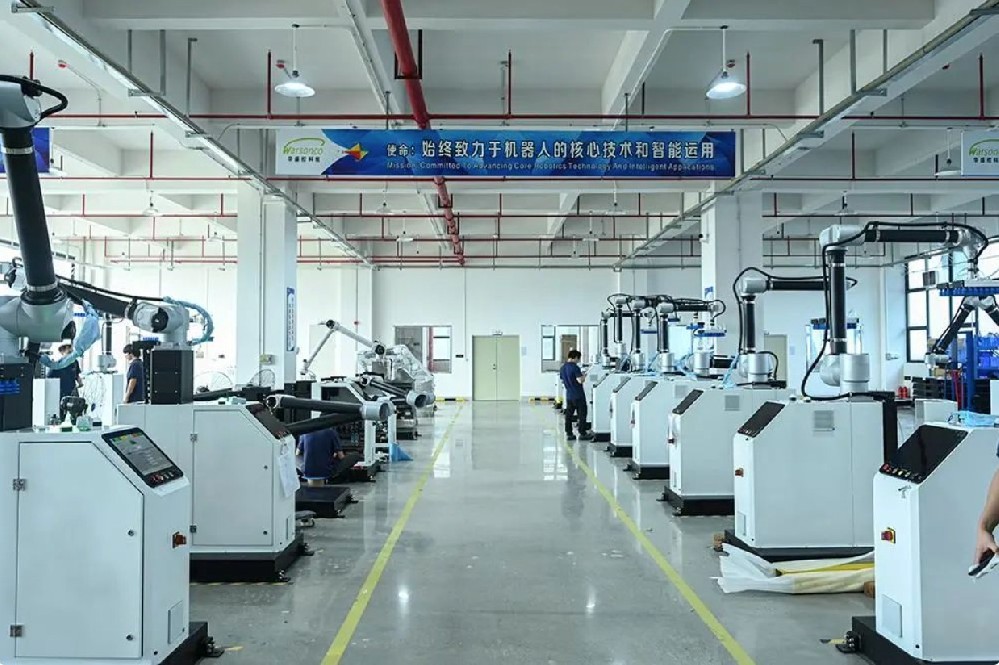In modern industrial production, palletizing robots are playing an increasingly important role. They are capable of improving production efficiency and reducing labor intensity, and are widely used in numerous industries such as food, beverages, and chemicals. However, there is a significant variation in the prices of palletizing robots, which confuses many companies when making purchasing decisions. Understanding the factors that influence the price of palletizing robots, as well as the market trends, is crucial for companies to make informed choices and investments.

Brand is one of the important factors that influence the price of palletizing robots. Well-known brands generally offer higher quality and reliability, as they invest substantial resources in areas such as research and development, production, and after-sales service. After years of building their presence in the market, these brands have established a good reputation, and consumers have more confidence in the quality of their products. For example, stacker robots from internationally renowned brands such as ABB and KUKA tend to have relatively high prices due to their advanced technology and excellent performance. In contrast, some emerging domestic brands may attract customers with lower prices in order to break into the market, but they might be slightly inferior in terms of brand influence and technological maturity. The load-carrying capacity of the robot is also a key factor in determining its price. Load capacity refers to the maximum weight that a robot is capable of carrying. In general, the greater the load capacity, the more robust the structure and drive system of the robot are required, which increases manufacturing costs. For companies that need to handle heavier items, such as those in the steel and construction materials industries, it is necessary to choose palletizing robots with a higher load capacity. Naturally, the cost of these robots is significantly higher than that of robots with a lower load capacity. The load capacity is also related to the working range of the robot. The larger the working range, the more challenging it becomes to design and manufacture the robot, which in turn affects its price. The repeatability of positioning accuracy also affects the price of palletizing robots. Repeatability accuracy refers to the degree of precision that a robot can achieve when performing the same action multiple times. High-precision palletizing robots can perform palletizing tasks more accurately, reduce errors, and improve production quality. In industries that require high precision in product stacking, such as electronics and pharmaceuticals, robots with high repeat positioning accuracy are necessary. To achieve high precision, robots need to be equipped with more sophisticated sensors and control systems, which undoubtedly increases production costs, thereby leading to higher prices. The supply and demand relationship in the market also greatly influences the price of palletizing robots. When demand in the market is strong and supply is relatively low, prices tend to rise. With the rapid development of manufacturing, an increasing number of companies are recognizing the advantages of palletizing robots, leading to a continuous rise in demand for them. Especially in some emerging industries such as e-commerce logistics and new energy, there has been an explosive growth in demand for palletizing robots. On the contrary, if there is an oversupply in the market, companies will compete for customers by lowering prices in order to enhance their competitiveness. After-sales service is also a factor that affects prices. High-quality after-sales service can provide long-term technical support and assurance for enterprises, ensuring the proper operation of robots. Some brands offer comprehensive after-sales services, including regular maintenance, troubleshooting, training, etc. These services increase the operating costs for the companies, which are then reflected in the product prices. Some lower-priced robots may have shortcomings in terms of after-sales service, and companies need to take this into consideration when making a purchase decision. From the market trends, the palletizing robot market has shown rapid development in recent years. As technology continues to advance and costs gradually decrease, the price of palletizing robots has been on a downward trend overall. Domestic brands have managed to gain a certain share of the market due to their cost-effective advantages, and they are now in fierce competition with international brands. There are also some customized palletizing robot solutions available on the market that can be designed to meet the specific needs of individual companies, accommodating the unique requirements of different industries. When purchasing palletizing robots, companies should not focus solely on price, but rather consider a range of factors such as brand, load capacity, repeat positioning accuracy, market supply and demand, and after-sales service. Only in this way can the most suitable palletizing robot be selected, thereby maximizing production efficiency and economic benefits.